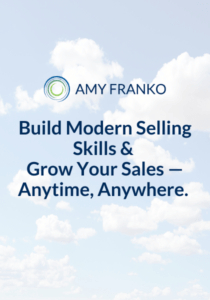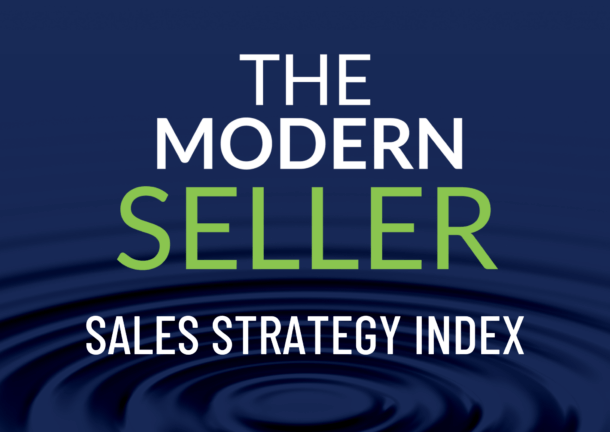Many of my clients are focused on growth as they continue to recover from the pandemic. While performance results varied widely depending on their industry, there’s still a common theme– they all want to forge ahead and succeed.
A healthy sales culture is key to that move forward, as well as thriving in the future.
Never has it been more important for both a top-down approach with growth officers and sales officers, but also a bottom-up approach with individual sales professionals to define, own, and foster a sales culture. I also refer to it as a sales growth culture.
This article shares some trends and themes around the four key areas I see organizations needing to create a successful sales growth culture.
Questions to Ask Yourself about Sales Culture
The pandemic has no doubt created the opportunity to ask questions to reflect on both our current and future state of our sales culture. Below are some of those questions that any sales leader or sales professional should be asking right now:
- How relevant are we to our current customers right now? According to Hinge Research Institute’s Inside the Buyer’s Brain study, the need for relevancy has jumped by 33% since 2018. This means your relevance in everything from products and services to overall client experience and how well you help solve their biggest challenges.
- How can we reimagine our markets? This is all about market demand and being in the position of creating it. What do we need to reimagine in order to create market demand, grow certain industry segments, or insulate ourselves from the down areas of the market?
- How loyal are our current clients? Are we earning their loyalty, or might they be considering a move to another provider?
- Are we creating a future-forward sales culture? Are we creating a sales culture that will bring our company into the future and create the best possible customer relationships? Are we creating the right teams and investing in them?
Sales Growth Culture Defined
I envision a productive sales growth culture as one that balances the head and the heart. A focus on both the data and metrics, balanced with building the engagement and loyalty that’s needed to create high performing teams.
Ultimately, sales growth culture is your unique combination of factors that help you to create sustainable, meaningful, profitable growth. Focusing on that last part of the phrase — sustainable, meaningful, profitable growth — we don’t want to just create a short-term result. We want to create long-term results that propel the organization forward for years to come. The choices we make today as growth officers, as sales leaders, even as individual business development or sales professionals, all contribute to sustainability, meaningful growth, and profitable growth.
What Goes into Sales Growth Culture?
If you focus on these four key areas, you’ll build the foundation for sales growth culture: strategy, people, processes, and technology.
Key #1: Strategy
Strategy supports and also reveals your culture. What does your strategy say about your sales growth culture? Does it reveal that you have a healthy, productive, sustainable culture? Or does it perhaps show some cracks that need to be repaired?
Sales strategy themes to focus on can include your key growth areas for the year, like product and services mixes, lines of business, or key customer segments. Pricing models and incentives are important too. For example, if you’re looking to achieve a certain growth percentage, are you incenting your professionals to drop prices at the end of the quarter or year to close business? While you may hit the number, that also has unintended consequences affecting your longer-term growth strategy and your culture. Being mindful of the strategy decisions made in one area, like pricing, can either positively or negatively impact results in another area of the business.
Key #2: People
The second key, people, may be the most important to sales growth culture. Questions to be thinking about here can include: What organizational design will best support your culture? Do your sales professionals and leaders have the skillsets and tools needed? Are people in the right roles?
The people equation also includes any role with customer interaction because they also contribute to your sales culture. These can be internal roles like your sales teams, client success teams, technical teams, and even back office teams. These are your external relationships as well – your outside partners and distributors. That’s your network ecosystem.
One strategy is to evaluate the sales skills of anyone in a client facing role, and especially those on quota. By knowing the makeup of your team, you’ll make better decisions in skill development opportunities and hiring decisions. You’ll make the right people investments to build the right sales culture.
Key #3: Process
I’ve experience varying levels of process within my clients’ organizations when it comes to sales growth culture. Some have very little process, which inhibits growth because there’s no defined structure in which to operate. I’ve also experienced too much process. That bogs down results because it starts becoming all about the process instead of creating the right result.
Your processes can encompass any number of things, including the talent lifecycle of your professionals, your sales process and methodologies, skill development, or your metrics and accountabilities. Any change in one area of process can have an impact downstream, which makes it important to monitor both intended and unintended outcomes.
An approach here is to review the processes you currently have in place and their level of effectiveness. Do they support the growth culture you’re looking to create? Do they need to stay, be eliminated, or be simplified? I’ve worked with clients who didn’t have a strong sales process, and it hampered growth. By designing and implementing a process, and then creating accountabilities, they changed their culture.
Key #4: Technology
According to Smart Selling Tools in their 2019 benchmark survey, sales professionals use, on average, five sales productivity tools. The average spend per sales professional is $150/month on these tools. Like processes, tools have a tipping point. It’s a bit of the Goldilocks’ principle. There’s a balance to having the right sales productivity tools to support your teams, but not so many tools that they detract from selling and building client relationships.
There are two places I often recommend for my clients to focus on for the technology key. The first is your Customer Relationship Management system (CRM). This is the centralized tool where your relationships, opportunities, and metrics are managed. The second area of focus, and especially right now, is video. Having the tools that equip your teams to build relationships remotely. This is a trend that will stay, even once we’re back together within in-person environments.
Sales Leaders and Growth Officers Set the Pace
Creating a healthy, productive sales growth culture starts with growth officers and sales leaders in the organization. We set the pace. Take the time to reflect on the sales growth culture that you’d like to create and then plan around the areas of strategy, people, process, and technology. When you implement that plan, you’ll create a model for sales growth culture that will help you create long term success.
The Strategic Selling for Professional Services online sales training program is here.
If you’re in professional services, or selling complex solutions into B2B environments, this program is ideal for both individuals and teams. The vision is to provide a platform and experience, where you can learn and apply these modern selling skills, anytime, anywhere.
It’s easy to get started, and you’ll have access to two free preview lessons. These lessons are teaching skills, they aren’t fluff introductions! You’ll take something away just in the preview that you can apply today.
Head out to learn.amyfranko.com to get more detail and your free previews.


 Our Strategic Selling signature sales training program is now available online. This online sales learning program is ideal for professional services and B2B sales. Get started with 2 free lessons.
Our Strategic Selling signature sales training program is now available online. This online sales learning program is ideal for professional services and B2B sales. Get started with 2 free lessons.